Do your knees announce your arrival with a symphony of cracks, pops, and groans?
Do stairs feel less like a part of your house and more like a mountain you have to conquer every day?
If you nodded along, you’re not alone. For many of us, these are the first whispers of knee osteoarthritis (OA), and hearing that diagnosis can feel like a life sentence of decline.
The words “wear and tear” or “degenerative” get thrown around, painting a picture of a joint that’s simply giving up. It’s a scary thought, leading many to believe their only future involves inactivity, pain medication, and eventual surgery.
But what if I told you that picture is wrong?
What if you could build a powerful, supportive “scaffolding” of muscle around your knee? A biological shock-absorbing system so effective that it takes the pressure off the joint, reduces pain, and dramatically improves your quality of life.
This is the core idea behind “bulletproof knees.” It’s not about reversing the changes in your joint—it’s about making your joint so well-supported that those changes matter less. It’s about taking back control.
This guide is your first step. We’re going to give you a clear, actionable plan for managing knee osteoarthritis, moving from fear to empowerment.
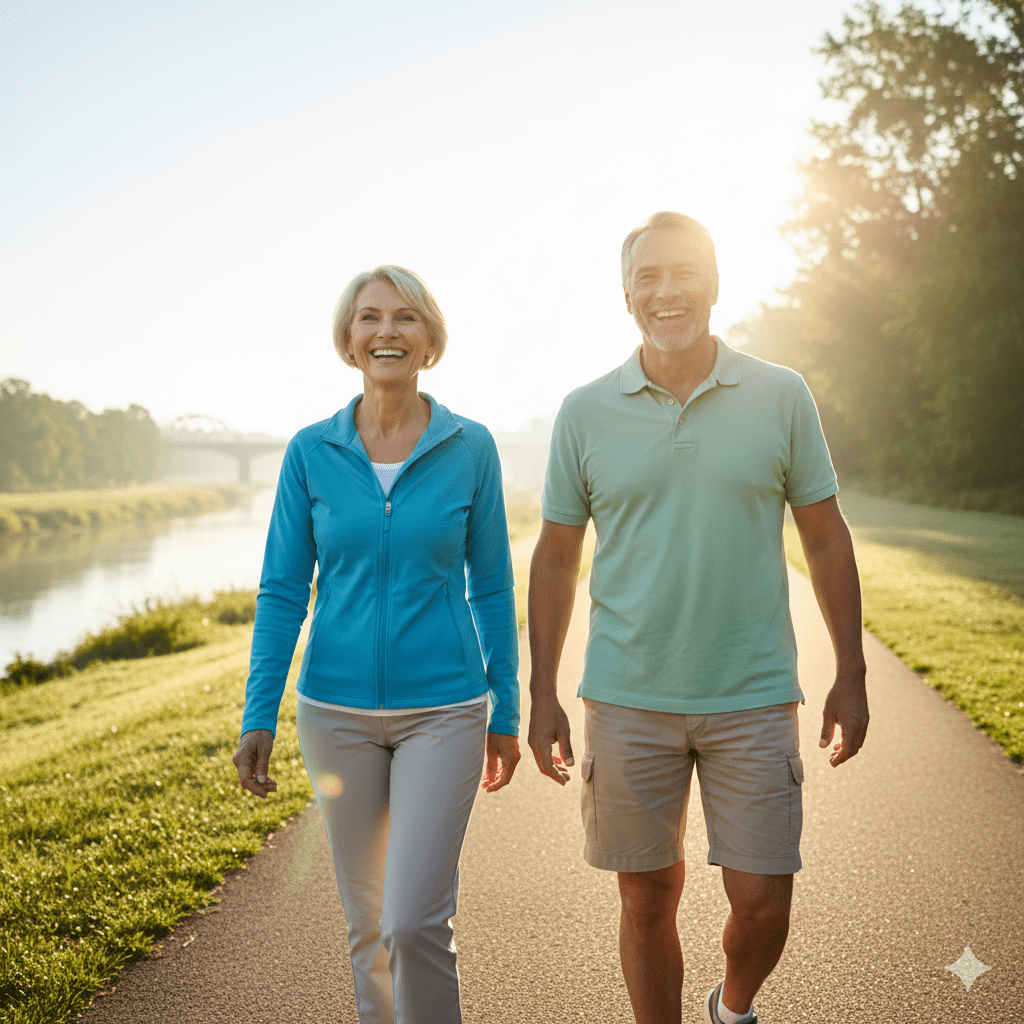
Myth vs. Fact: Unpacking the Truth About Knee Osteoarthritis
Before we dive into the exercises, let’s bust two of the most common and damaging myths we hear as physiotherapists. Believing these can hold you back from getting better.
Myth 1: “I have arthritis, so I should stop exercising to protect my knee.”
This is the single biggest misconception about OA. It sounds logical—if something is worn, you should use it less, right?
Fact: Wrong. Motion is lotion. Your knee joint is lined with cartilage that has no direct blood supply. It gets its nutrients from the surrounding joint fluid, called synovial fluid. Movement is what circulates this fluid, nourishing the cartilage and keeping it as healthy as possible. The right kind of movement is the most powerful non-surgical tool you have.
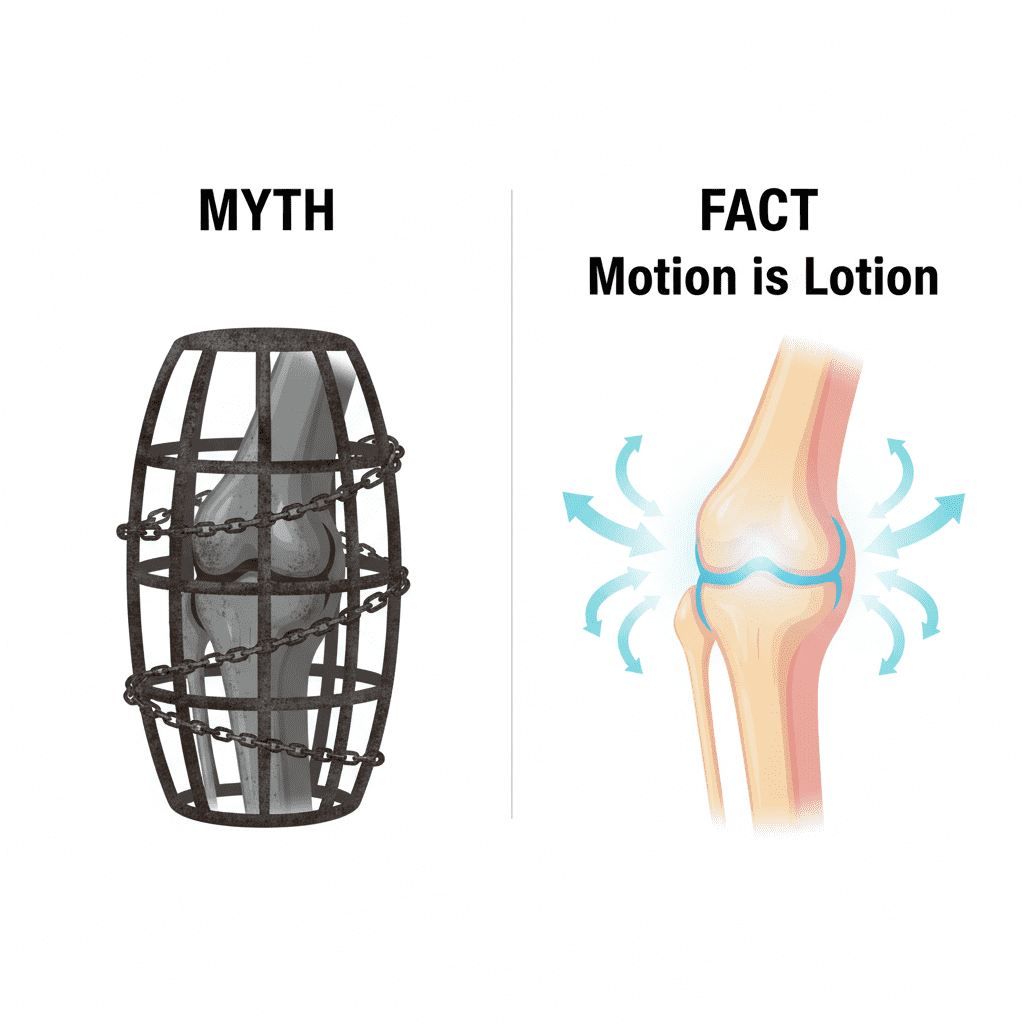
Myth 2: “My knee pain is because my bones are grinding together.”
The image of “bone-on-bone” is terrifying, but pain is far more complex than that.
Fact: Pain is an alarm signal, not just a damage detector. While your cartilage is worn, much of the pain you feel comes from things we can absolutely change: inflammation, weak and overloaded muscles, and poor movement patterns. This is fantastic news because these are all things that physiotherapy for knee arthritis excels at fixing. We can calm the inflammation and correct the patterns that are screaming at your brain.
The 3 Pillars of Building Bulletproof Knees
Think of this as your blueprint. To create a strong, resilient, and pain-free knee, you need to build a foundation on three key pillars: Strength, Mobility, and Control. Neglect one, and the whole structure is weaker.
Pillar 1: Strength – Your Natural Shock Absorbers
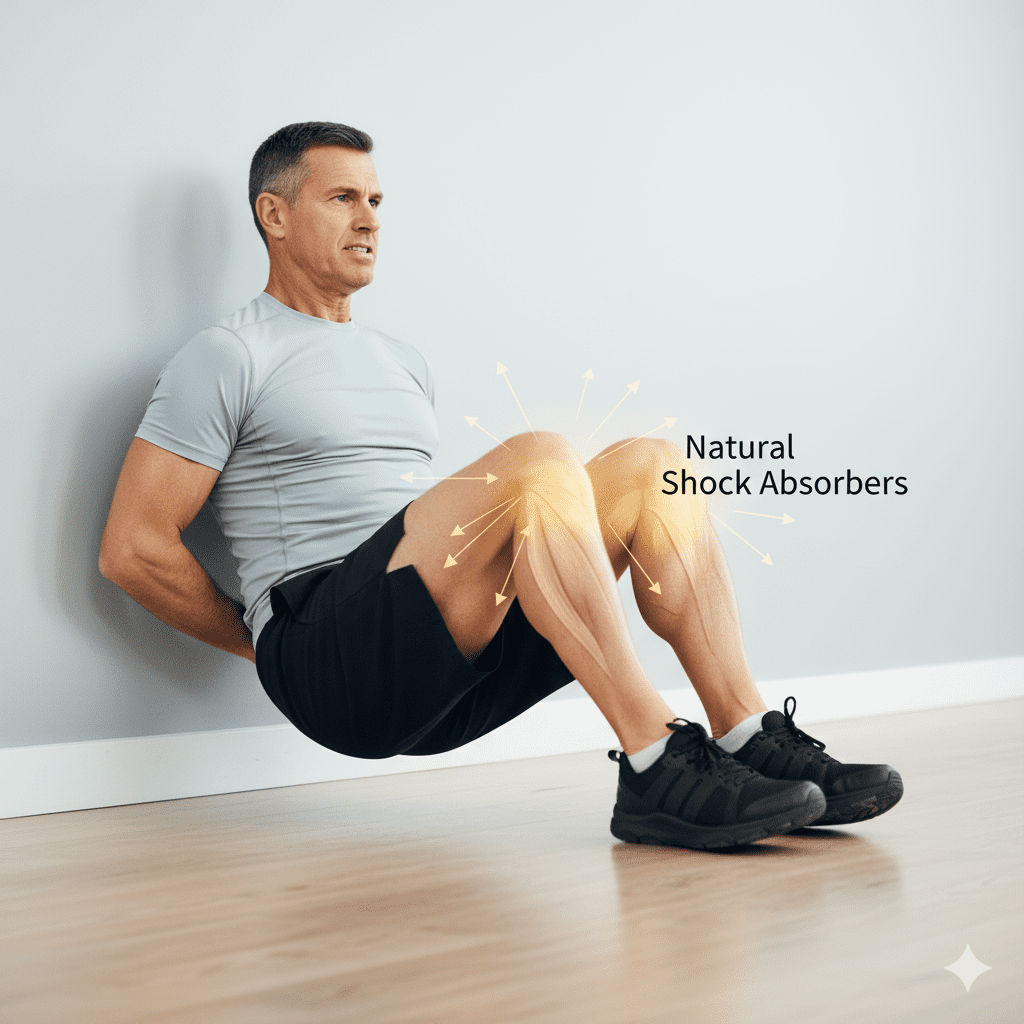
Strong muscles are your knee’s best friend. The quadriceps (front of thigh), hamstrings (back of thigh), and glutes (buttocks) act as powerful shock absorbers, taking the load off the joint surface with every step you take. When they are weak, that force goes straight into the joint.
Here are some essential exercises for knee osteoarthritis that focus on building this support system.
Exercise 1: Seated Leg Extensions (VMO Focus)
- How to do it: Sit tall in a chair with your feet flat on the floor. Slowly straighten one leg until it’s parallel to the floor. Focus on squeezing the muscle on the inner part of your thigh (your VMO) for the last few inches of the movement. Hold for 3-5 seconds, then slowly lower it back down. Aim for 10-15 repetitions on each leg.
- Why it helps: This specifically targets the Vastus Medialis Oblique (VMO), a key muscle for stabilizing your kneecap. A strong VMO ensures the kneecap tracks smoothly, reducing irritation.
- Pro Tip: Don’t just kick your leg up. Control the movement from start to finish. The real magic happens in that final, powerful squeeze at the top.
Exercise 2: Glute Bridges
- How to do it: Lie on your back with your knees bent and feet flat on the floor, about hip-width apart. Squeeze your glutes and lift your hips off the floor until your body forms a straight line from your shoulders to your knees. Hold for 3 seconds, then slowly lower. Aim for 10-15 repetitions.
- Why it helps: Your glutes control your thigh bone. Weak glutes can cause your knee to collapse inward when you walk or squat, putting immense stress on the joint. This is one of the best ways to learn how to strengthen knees with arthritis by focusing on their support system.
- Pro Tip: Avoid arching your lower back. The work should come entirely from your glutes. Imagine you’re squeezing a $100 bill between them!
Pillar 2: Mobility – The Joint’s Lubrication System
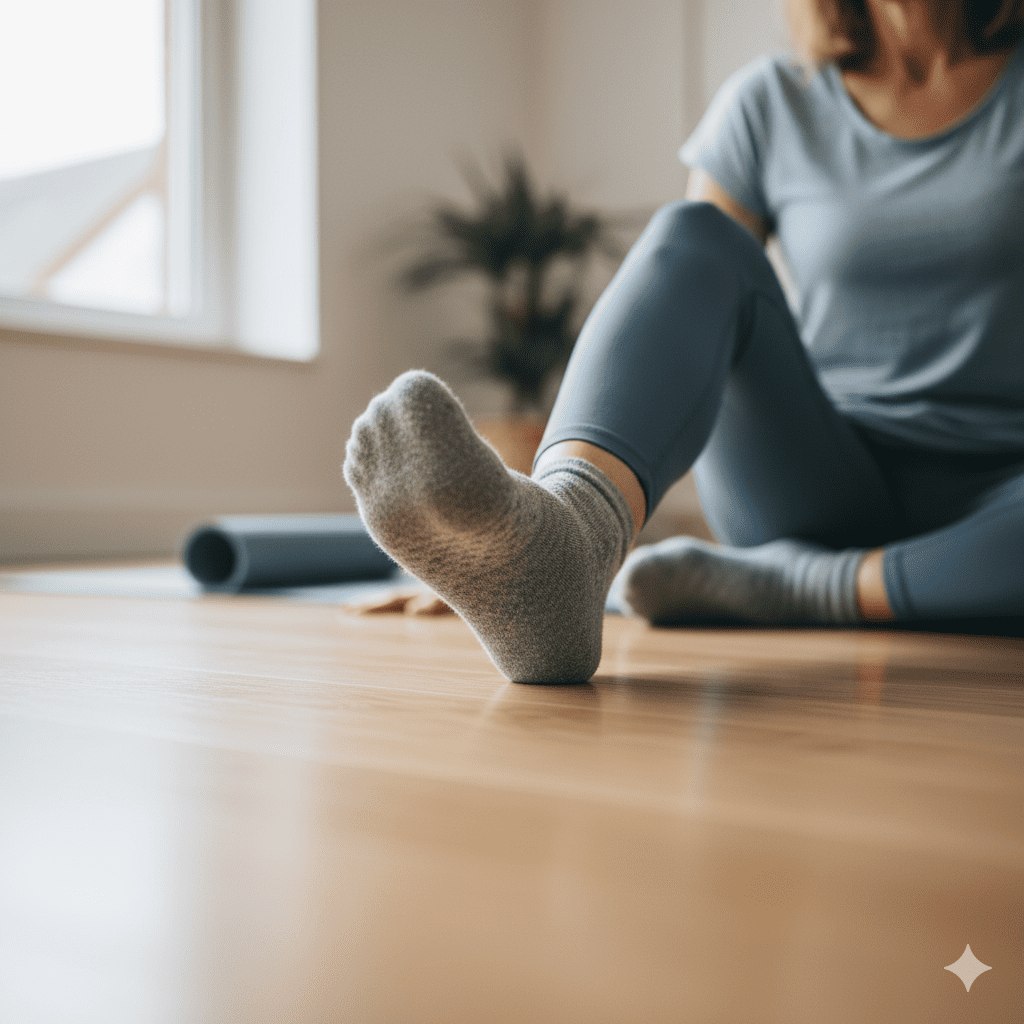
A stiff joint is often a painful joint. Improving your knee’s range of motion helps to lubricate the joint (remember “motion is lotion”?) and prevents the surrounding tissues from becoming tight and restricted.
Exercise: Heel Slides
- How to do it: Lie on your back or sit on a bed with your legs straight out in front of you. Slowly slide the heel of your affected leg towards your bottom, bending your knee as far as is comfortable. You should feel a gentle stretch. Hold for a moment, then slowly slide it back to the starting position. Aim for 15-20 repetitions.
- Why it helps: This simple movement encourages the production and circulation of synovial fluid, which is vital for knee cartilage health. It gently pushes your knee through its available range of motion, fighting off stiffness.
- Pro Tip: Wear a sock on a smooth surface like a hardwood floor or use a plastic bag under your heel on a carpet to make the slide smoother and easier.
Pillar 3: Control – Your Knee’s Smart System
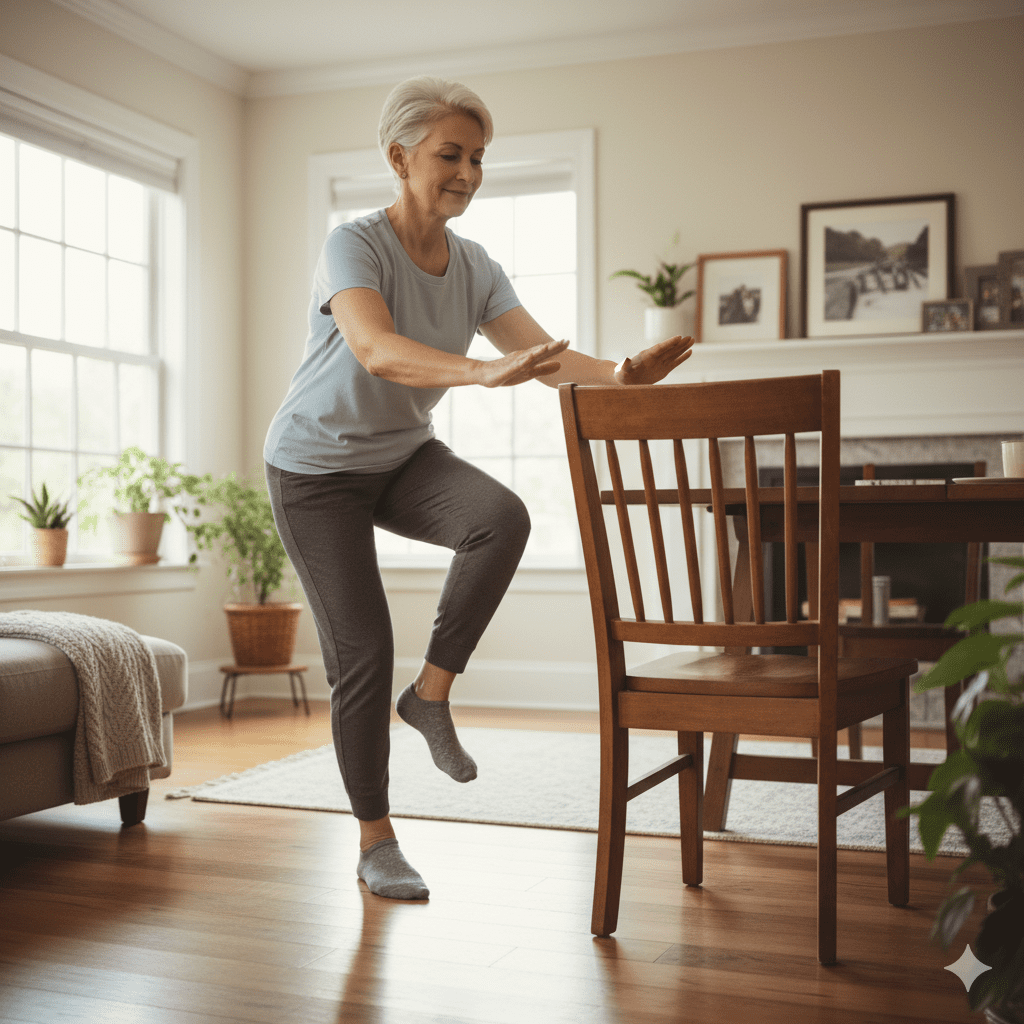
Control, or proprioception, is your body’s awareness of where it is in space. It’s the “smart system” that tells your muscles to fire at the right time to keep you stable. When this system is sharp, your movements are more efficient, and you’re less likely to put your knee in a vulnerable position.
Exercise: Single Leg Stance
- How to do it: Stand next to a sturdy chair or kitchen counter for support. Shift your weight onto one leg and lift the other foot just an inch or two off the ground. Try to hold your balance for 20-30 seconds without wobbling. Keep your standing knee slightly bent, not locked straight.
- Why it helps: This exercise trains all the small stabilizing muscles around your knee and hip to work together. Better balance means less micro-trauma to the joint during everyday activities like walking on uneven ground.
- Pro Tip: Safety first! Start by lightly holding onto the counter. As you get better, try just touching it with one finger, and eventually, try to let go completely. To make it harder, try closing your eyes for a few seconds.
Beyond the Exercises: 3 Lifestyle Tweaks That Matter
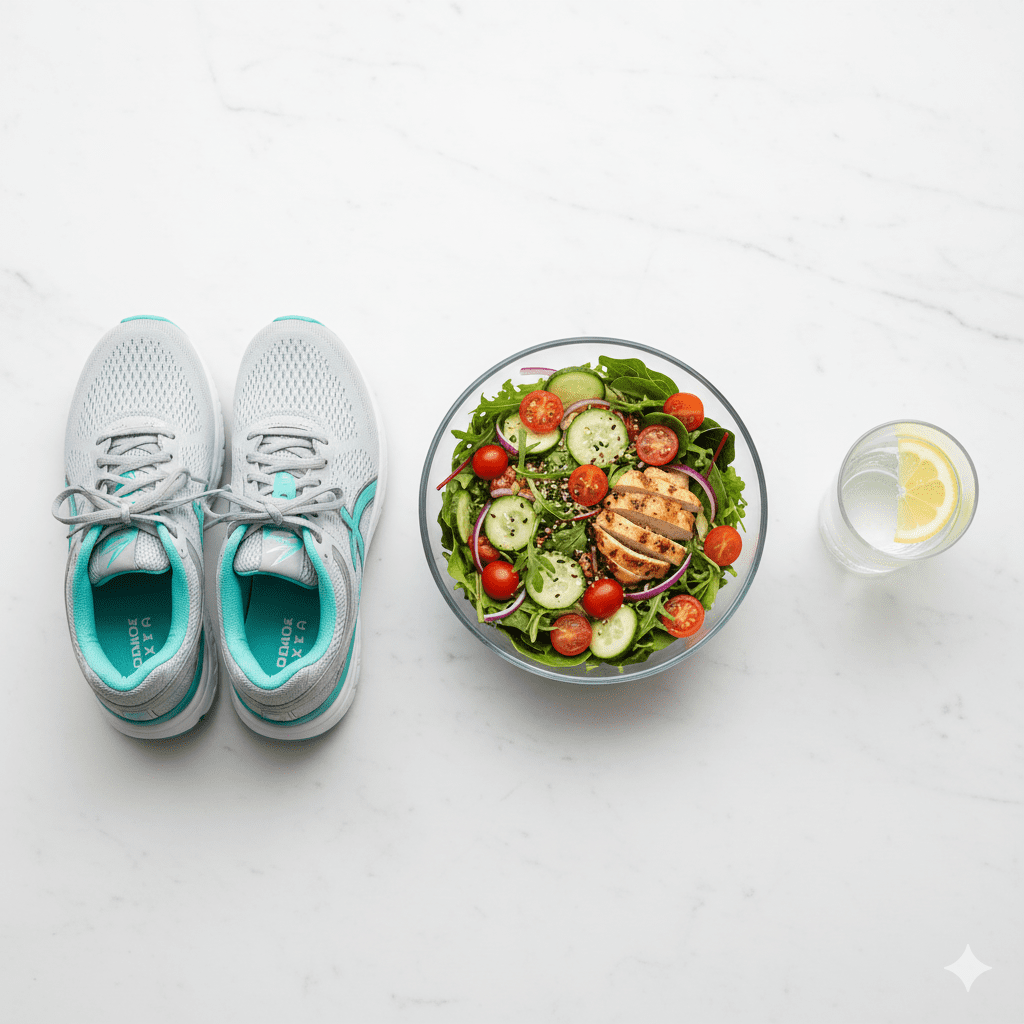
To truly reduce knee pain from arthritis without surgery, your efforts can’t stop at exercise. These simple tweaks make a huge difference.
- Lighten the Load: Every extra pound of body weight adds 4-6 pounds of pressure on your knees with each step. Even a small amount of weight loss can provide significant pain relief.
- Choose Your Shoes Wisely: Ditch the unsupportive flats and worn-out trainers. A good pair of cushioned, supportive shoes acts as the first line of defense, absorbing shock before it even reaches your knees.
- Mix It Up: If running on pavement hurts, don’t stop moving—just change the activity. Low-impact options like swimming, water aerobics, or cycling are fantastic for keeping your cardiovascular system healthy and your muscles strong without pounding on the joints.
Your Knees Don’t Have a “Best Before” Date
Receiving an osteoarthritis diagnosis can feel like the end of the road for an active life, but it’s not. It’s a crossroad.
You can choose the path of inactivity and fear, or you can choose the path of empowerment.
The blueprint is right here in front of you. Strength, Mobility, and Control are your best weapons in managing knee osteoarthritis. By consistently working on these three pillars, you are actively building a more resilient body and a more confident future.
Your knees don’t have to dictate your life. Start building your bulletproof plan today.
Feeling overwhelmed or unsure where to start? A personalized plan is the fastest way to safe and effective results. Book a consultation at physiogain.com to get a tailored roadmap built just for your knees.
Which of these exercises are you going to try first? Let us know in the comments below!
This information is very helpful!